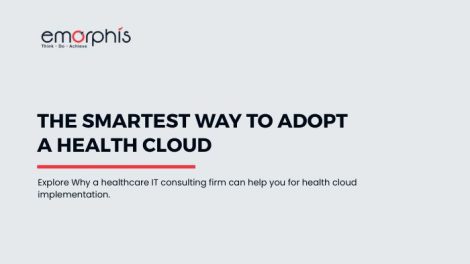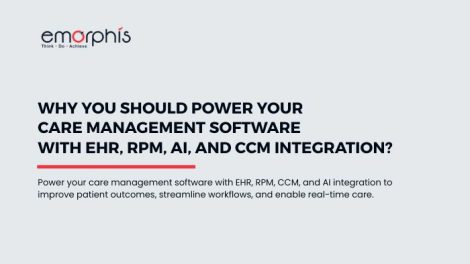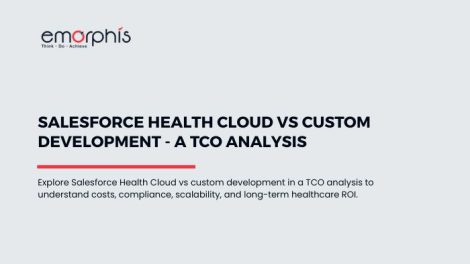Overview
As a CEO of a healthcare product company, you understand the challenges of marketing products in the healthcare industry. The healthcare industry is highly regulated, complex, and constantly evolving. In addition, healthcare consumers are increasingly sophisticated and demand high-quality, personalized healthcare products and services. To be successful, healthcare product companies must navigate a complex landscape of regulatory requirements, clinical evidence, and also stakeholder engagement. This blog post is designed to help healthcare product company CEOs navigate the challenges of marketing healthcare products. We have compiled 15 essential healthcare marketing strategies that are specific to the healthcare industry. These strategies have been tested and proven to be effective in promoting healthcare products and services. And they will help you maximize your product’s potential.
Whether you are launching a new product, expanding your market share, or trying to gain a competitive edge. These strategies will help you develop a comprehensive and strategic approach to healthcare product marketing.
The healthcare industry is unique, and it requires a tailored approach to marketing. As CEO of a healthcare product company, understanding the industry’s unique characteristics is essential. And also how it impacts your marketing efforts. This blog post will provide you with the knowledge and insights you need to successfully market your healthcare products.
Here are the highest-rated healthcare marketing strategies.
So let’s dive in and explore the 15 essential marketing strategies for CEOs of healthcare product companies. By implementing these strategies, you will be able to differentiate your products and services in the marketplace. Also, build trust with your stakeholders, and ultimately drive success for your organization.
We will cover the key strategies for marketing healthcare products that are essential for CEOs of healthcare product companies. From regulatory compliance and clinical evidence to patient education and social media. We will explore each strategy in detail and provide actionable tips for implementation. These strategies have been tested and proven to be effective in promoting healthcare products and services. And they will help you differentiate your products in a highly competitive and regulated environment.
I. Focus on Regulatory Compliance
Ensuring regulatory compliance is one of the crucial aspects of healthcare product marketing strategies. Compliance with government regulations helps to build trust with healthcare providers and patients. Also increases the product’s marketability, and mitigates the risk of legal and financial consequences.
Specific points:
- Familiarize yourself with relevant regulations: Conduct thorough research on government regulations and guidelines applicable to your product. Ensure that your product is compliant with all the relevant regulations before entering the market.
- Involve compliance experts: Work with compliance experts to ensure that your product meets regulatory requirements. Compliance experts can provide valuable guidance throughout the product development process and ensure that your product meets all regulatory requirements.
- Prioritize ongoing compliance: Compliance is an ongoing process, not a one-time event. Make sure that your team is committed to maintaining compliance throughout the product’s lifecycle.
Some Real-World Examples:
- In 2015, Pfizer agreed to pay $784.6 million to settle allegations that the company violated the False Claims Act by promoting off-label uses of certain drugs. This settlement demonstrates the importance of regulatory compliance in healthcare product marketing.
- In 2016, Theranos, a healthcare technology company, was charged with fraud by the Securities and Exchange Commission (SEC) and the Department of Justice for making false and misleading statements about its products. The company’s downfall highlights the importance of regulatory compliance in healthcare product marketing.
- In 2018, Reckitt Benckiser, a pharmaceutical company, agreed to pay $1.4 billion to settle allegations that it improperly marketed an opioid addiction treatment. This settlement underscores the significance of regulatory compliance in healthcare product marketing.
II. Highlight data security
In today’s digital age, data security has become a crucial concern for all industries, including healthcare. With sensitive patient information being shared and stored on various platforms. Healthcare product company CEOs must emphasize their data security commitment to establish customer trust.
Specific points:
- Implement robust data security measures: Healthcare product companies should implement strong encryption methods. And also access controls to ensure that patient data is secure and protected from unauthorized access.
- Train employees on data security: Companies should conduct regular training sessions for employees. This is to educate them on the importance of data security and the best practices to follow.
- Obtain certifications: Healthcare product companies can obtain certifications such as the Health Information Trust Alliance (HITRUST). This is to demonstrate their commitment to data security and compliance with industry standards.
Real-world examples:
- Cerner Corporation: Cerner, is a leading healthcare technology company. It has implemented robust data security measures such as multi-factor authentication and encryption to protect patient data. The company has also obtained HITRUST certification to demonstrate its commitment to data security.
- Epic Systems: Epic, a provider of electronic health record systems, has implemented access controls and encryption to secure patient data. The company has also established a team dedicated to data security and compliance.
- Allscripts Healthcare Solutions: Allscripts, a healthcare software company, has implemented encryption and access controls to protect patient data. The company has also obtained HITRUST certification to demonstrate its compliance with industry standards.
Click to read about Healthcare Cybersecurity: How To Ensure Healthcare Data Security?
III. Emphasize clinical evidence
Emphasizing clinical evidence is an important aspect of marketing healthcare products. As it provides credibility and establishes trust with potential customers. Clinical evidence refers to the results of research studies, clinical trials, and other scientific data. Which supports the effectiveness and safety of a healthcare product. By highlighting clinical evidence, healthcare product companies can differentiate themselves from their competitors. And also provide assurance to customers that their products are effective and safe.
Specific points:
- Showcase clinical trial results: Highlight the results of clinical trials that demonstrate the efficacy and safety of your product. Use simple language to convey the results to customers.
- Use expert endorsements: Utilize endorsements from experts like doctors and researchers to strengthen your product’s clinical evidence.
- Provide educational resources: Create educational materials, such as whitepapers and infographics. That summarizes the clinical evidence supporting your product and explains the science behind it.
Real-world examples:
- Philips’ clinical evidence for sleep apnea treatment: Philips, a healthcare technology company. It has emphasized the clinical evidence supporting its sleep apnea treatment products. They have created educational resources that explain the science behind their products and how the clinical evidence supports their effectiveness.
- Abbott’s clinical evidence for medical devices: Abbott, a healthcare product company. It highlights the clinical evidence supporting the effectiveness and safety of their medical devices. They showcase the results of clinical trials and studies on their website. And do provide educational resources to help customers understand the science behind their products.

IV. Engage with healthcare providers
Engaging with healthcare providers can be a powerful way for healthcare product company CEOs to market their products. By building relationships with providers, companies can increase product adoption, receive valuable feedback, and improve patient outcomes.
Specific Points:
- Attend industry conferences and events to network with healthcare providers and showcase your product.
- Provide free samples or trials to healthcare providers. This is to encourage them to try your product and recommend it to their patients.
- Provide training and educational resources to help healthcare providers better understand your product and how to use it effectively.
Real-World Examples:
- Medtronic is a medical device company. It partnered with healthcare providers to create an online forum. Where providers could share their experiences and provide feedback on Medtronic’s products.
- Novo Nordisk, a pharmaceutical company, created an education program for healthcare providers. This is to teach them about diabetes management and the use of Novo Nordisk’s products.
- Philips Healthcare, a medical equipment company, provides training and support to healthcare providers. In fact, it helps them properly use and maintain Philips’ medical devices.
V. Educate patients
In the competitive healthcare industry, it is essential for healthcare product companies to educate patients about their products and services. Educating patients not only helps them make informed decisions but also builds trust in the brand. By providing patients with accurate and comprehensive information. Healthcare product companies can establish themselves as thought leaders and differentiate themselves from competitors.
Specific points:
- Provide clear and concise information about the benefits and risks of the product or service.
- Use plain language and avoid technical jargon that may be difficult for patients to understand.
- Offer educational materials in multiple formats, such as brochures, videos, and infographics, to accommodate different learning styles.
- Make educational materials easily accessible through a variety of channels, such as websites, social media, and mobile apps.
- Use patient testimonials and case studies to demonstrate the value of the product or service.
Real-world examples:
- The pharmaceutical company Pfizer created the “Living With” series of websites. This provides information and resources for patients living with various health conditions. The websites feature videos, articles, and interactive tools to help patients manage their conditions and make informed treatment decisions.
- The healthcare technology company Medtronic provides patients with educational materials on its website, including videos, infographics, and guides. The materials cover a range of topics, such as understanding medical devices, preparing for surgery, and managing chronic conditions.
- The healthcare provider Kaiser Permanente offers a variety of educational resources for patients, including online classes, workshops, and webinars. Topics covered include nutrition, fitness, stress management, and chronic disease management.
VI. Consider value-based pricing
Value-based pricing is a strategy that focuses on setting prices for healthcare products. It is based on the value they provide to patients and the healthcare system, rather than their production costs. This approach requires a deep understanding of the needs of patients and healthcare providers. As well as a willingness to collaborate with stakeholders to achieve the best possible outcomes.
Specific points:
- Understand the needs of patients: Healthcare product companies should focus on understanding the needs of patients. As a matter of fact, the value that their products can bring to their lives. This requires gathering feedback from patients and incorporating their input into the development and pricing of products.
- Collaborate with healthcare providers: Companies should work closely with healthcare providers to understand the needs of the healthcare system. This ensures that their products are aligned with these needs. This can help to ensure that products are priced appropriately. In fact, they provide the maximum value to patients and the healthcare system.
- Develop innovative pricing models: Value-based pricing requires companies to develop innovative pricing models that reflect the value of their products. For example, companies may offer volume discounts or performance-based contracts that tie payments to the outcomes achieved by patients.
Real-world examples:
- Novartis’ CAR-T therapy, Kymriah, was priced at $475,000 for a single treatment. However, the company has also developed a value-based pricing model that ties payments to the outcomes achieved by patients. This model is designed to ensure that patients receive the best possible outcomes while also ensuring that the healthcare system is able to afford the treatment.
- Amgen’s Repatha, a cholesterol-lowering drug, was initially priced at $14,000 per year. However, the company later implemented a value-based pricing model that offers discounts based on the reduction in cholesterol achieved by patients. This approach has helped to make the drug more accessible to patients while also ensuring that the company is able to recover its development costs.
- Merck’s Keytruda, a cancer immunotherapy drug, has been priced based on the value it provides to patients and the healthcare system. The company has implemented a performance-based pricing model that ties payments to the outcomes achieved by patients. This approach has helped to ensure that patients receive the best possible outcomes while also making the drug more affordable for the healthcare system.
In today’s digital age, social media has become an essential tool for healthcare product companies to connect with their target audience and engage with them in a meaningful way. Leveraging social media can help companies to build brand awareness, drive sales, and create a loyal customer base.
Specific points:
- Develop a social media strategy: Companies developing healthcare products should create a comprehensive social media strategy that aligns with their overall marketing goals. The strategy must specify the target audience, the platforms to be in use, the content to be in sharing, and the metrics for measuring success.
- Create engaging content: Healthcare product companies must create engaging and valuable content. Which stands out in order to capture the attention of social media users. This can include informative blog posts, educational videos, and user-generated content.
- Build relationships with influencers: Influencers can be powerful advocates for healthcare products, as they have large followings and can help to spread the word about a product or service. Companies should identify and build relationships with influencers who align with their brand and can help to amplify their message.
Real-world examples:
- Pfizer’s Twitter account, @Pfizer, has over 300,000 followers and shares news and updates about the company’s products and initiatives. The account is also used to engage with customers and respond to their questions and comments.
- Johnson & Johnson’s YouTube channel, JNJHealth, features a range of educational videos on topics such as mental health, skincare, and women’s health. The channel has over 40,000 subscribers and has been praised for its informative and engaging content.
- Ro, a healthcare product company that specializes in telemedicine, has leveraged social media to build a loyal customer base. The company has used platforms such as Instagram and Twitter to share informative content, engage with customers, and build brand awareness. Ro’s Instagram account, @ro.co, has over 50,000 followers and features user-generated content and educational posts.
VIII. Collaborate with industry partners
Collaboration with industry partners in fact can bring a wealth of opportunities for healthcare product companies to market their products. By working with partners in the same industry, companies also can expand their reach, increase their brand recognition, and access new customer bases.
Specific Points:
- Joint marketing campaigns: Partnering with industry leaders allows healthcare product companies to pool their resources and create joint marketing campaigns that reach a wider audience.
- Shared research and development: Collaborating with industry partners can help healthcare product companies to share research and development costs, accelerate the product development process, and access new technologies.
- Improved supply chain management: Partnering with industry partners can improve supply chain management by sharing resources and expertise, reducing production costs, and enhancing efficiency.
Real-World Examples:
- In 2018, pharmaceutical companies Pfizer and Novartis teamed up to jointly develop and market gene therapies for the treatment of blindness. By pooling their resources and expertise, the two companies were able to bring a potentially groundbreaking therapy to market much more quickly than they could have alone.
- Medical technology companies Philips and Nuance Communications partnered in 2019 to develop an AI-powered platform that integrates with electronic health records and aims to improve clinical decision-making. The partnership combined Philips’ expertise in medical imaging and patient monitoring with Nuance’s speech recognition and natural language processing capabilities.
- In 2020, drug maker GSK and telemedicine provider Push Doctor partnered to offer remote consultations and prescription delivery to patients in the UK. The partnership enabled GSK to expand its reach and offer its products to patients in a new and convenient way, while Push Doctor benefited from the added credibility and resources of a major pharmaceutical company.
IX. Address healthcare disparities
Addressing healthcare disparities can be an important factor in marketing healthcare products, as it can demonstrate a commitment to social responsibility and can also expand the potential customer base. In fact, here are some specific ways that addressing healthcare disparities can be used in marketing:
Specific Points:
- Highlight how your product can help reduce disparities: If your product is designed to improve health outcomes in underserved communities or address disparities in access to care, make sure to highlight this in your marketing materials.
- Partner with organizations that focus on healthcare disparities: Collaborating with organizations that work to address healthcare disparities can help increase your visibility and credibility among the communities you are trying to reach.
- Share success stories: Share stories of how your product has helped individuals from diverse backgrounds overcome health challenges. As a matter of fact, highlighting the positive impact your product can have in reducing disparities.
- Consider pricing strategies that make your product accessible: Value-based pricing can be an effective way to ensure that your product is accessible to all, regardless of socioeconomic status.
- Participate in community outreach events: Engaging with communities through events such as health fairs or community education sessions can help build trust and familiarity with your product among populations that may be historically underserved.
Real-world example:
One company that has successfully addressed healthcare disparities in its marketing is Pfizer. In fact, they have partnered with organizations like the National Medical Association to increase clinical trial participation among people of color. And they have also developed programs to increase access to healthcare for underserved communities. By highlighting its commitment to addressing healthcare disparities, Pfizer also has been able to build trust and loyalty among diverse populations, ultimately expanding their customer base.

X. Offer training and support
Healthcare product companies can leverage this strategy to market their products by providing training and also support to healthcare providers and patients. This can help in building trust and loyalty towards the product and brand, as a matter of fact, leading to increased adoption and usage.
Specific Points:
- Highlight the availability of training and support resources for healthcare providers and also patients in product marketing materials.
- Provide online training modules and resources, such as videos, tutorials, and FAQs, to help users get up to speed on product features and benefits.
- Offer live training sessions and webinars to provide hands-on guidance and support to healthcare providers and also patients.
- Establish a dedicated support team to address any questions or issues that arise during product use.
- In fact, encourage feedback from users to continuously improve the product and support offerings.
By offering training and support to users, healthcare product companies can differentiate themselves from competitors and also establish themselves as trusted partners in the healthcare industry.
Real-world example:
One example of a company that has successfully leveraged mobile technology to improve patient engagement and outcomes is WellDoc. The company’s product, BlueStar, in fact, is an FDA-cleared, prescription digital therapeutic for patients with type 2 diabetes. BlueStar uses a mobile app to provide patients with real-time feedback on their blood glucose levels, medication adherence, and also lifestyle choices. The app also includes a virtual coaching program that provides patients with personalized support and guidance.
As a matter of fact, WellDoc has partnered with several healthcare providers and payers to offer BlueStar as part of their diabetes management programs. The company has also conducted several clinical trials to demonstrate the efficacy of its product, which has been shown to improve glycemic control and reduce healthcare costs.
By focusing on patient engagement and leveraging mobile technology, WellDoc has been able to differentiate itself in a crowded market and improve outcomes for patients with type 2 diabetes.
XI. Utilize telehealth
Telehealth is an increasingly popular way for healthcare providers to deliver care remotely. This is by using technologies like video conferencing, mobile apps, and also remote monitoring devices. In fact, as a healthcare product company CEO, utilizing telehealth can help you market your products.
Specific Points:
- Highlighting your products’ compatibility with telehealth technologies can appeal to healthcare providers looking for remote care solutions.
- Developing telehealth-specific features for your products, such as video conferencing or remote monitoring capabilities, can help you stand out in a crowded market.
- Partnering with telehealth providers or incorporating telehealth platforms into your product offerings, can help you tap into new markets and also expand your customer base.
- Promoting the benefits of telehealth, such as increased convenience and access to care, can resonate with patients and healthcare providers alike.
Real-world examples:
Real-world examples of healthcare companies that have successfully utilized telehealth to market their products include:
- Teladoc Health is a telehealth company that partners with healthcare providers and also employers to offer virtual care solutions. In fact, Teladoc’s platform is compatible with a range of healthcare products, including remote monitoring devices and mobile apps.
- Philips Healthcare offers a range of telehealth solutions that enable remote patient monitoring and virtual consultations. Philips has also partnered with telehealth providers like American Well to expand its telehealth offerings.
- Ro is a healthcare company that specializes in telehealth consultations and also medication delivery. In fact, Ro has developed its own telehealth platform and offers a range of products, including online doctor consultations, remote monitoring devices, and prescription delivery services.

XII. Address Healthcare Trends
Staying on top of the latest healthcare trends can help healthcare product companies better understand the needs and expectations of their target audience. This information can be leveraged to develop products that meet those needs and address the trends in the market.
Specific Points:
Addressing healthcare trends can help healthcare product company CEOs to market their product in the following ways:
- Identify new opportunities: By understanding the latest healthcare trends, healthcare product companies can identify new opportunities to develop innovative products that address emerging healthcare needs.
- Create relevant messaging: Knowing the latest healthcare trends allows healthcare product companies to create relevant messaging that resonates with their target audience. This messaging can be used in marketing campaigns, on the company’s website, and in other promotional materials.
- Highlight product benefits: Addressing healthcare trends can help healthcare product companies highlight the benefits of their products. For example, if a company has developed a product that addresses the trend of remote patient monitoring, the company can highlight the benefits of the product, such as improved patient outcomes and reduced healthcare costs.
- Stay ahead of the competition: By addressing healthcare trends, healthcare product companies can stay ahead of their competition. By developing products that address emerging healthcare needs, they can gain a competitive advantage and capture market share.
Real-world examples:
- The rise of digital health trends, such as telemedicine and wearables, has led to the development of innovative healthcare products that cater to these trends. For example, telemedicine companies like Teladoc and Doctor on Demand have developed platforms that allow patients to connect with healthcare providers remotely, while wearables like Fitbit and Apple Watch have developed products that monitor health metrics and provide users with real-time insights.
- The trend of personalized medicine has led to the development of products that are tailored to an individual’s unique genetic makeup. Companies like 23andMe and AncestryDNA have developed genetic testing products that provide consumers with information about their ancestry, health risks, and genetic traits. This trend has also led to the development of personalized cancer treatments that target specific genetic mutations.
Click to check the Top 5 Trends in Healthcare IT Services for 2023
XIII. Consider the patient’s experience
When it comes to healthcare products, patient experience is critical. Patients are more likely to trust and use products that are designed with their needs in mind. Therefore, it’s essential for healthcare product company CEOs to focus on the patient experience as part of their marketing strategy.
Specific Points:
Here are some ways that considering patient experience can be used in marketing healthcare products:
- Focus on ease of use: Patients want products that are easy to use and understand. Healthcare product companies can market their products by highlighting their simplicity and ease of use.
- Prioritize patient feedback: Companies that prioritize patient feedback can build trust and loyalty among their customers. They can use patient feedback to improve their products and services and market their commitment to patient satisfaction.
- Create a patient-centric brand: Healthcare product companies that put the patient first can create a patient-centric brand that resonates with customers. They can use patient testimonials and stories to demonstrate the impact their products have had on patients’ lives.
- Provide personalized experiences: Personalization is becoming increasingly important in healthcare. Companies that can provide personalized experiences, such as customized treatment plans, can differentiate themselves in the market.
- Emphasize empathy and compassion: Patients want to feel that their healthcare providers and products are empathetic and compassionate. Healthcare product companies can emphasize these qualities in their marketing to build trust and connect with patients on an emotional level.
Real-world examples:
- One example of a company that prioritizes patient experience is Oscar Health, a health insurance company that uses technology to improve the patient experience. They have a mobile app that allows patients to access their medical records, book appointments, and talk to doctors. They also provide 24/7 customer service and offer personalized health coaching.
- Another example is Medtronic, a medical device company that focuses on patient-centric design. They involve patients in the design process to ensure that their products meet patient needs. They also offer educational resources and support to help patients manage their conditions and improve their quality of life.
XIV. Leveraging patient feedback
Leveraging patient feedback is a crucial aspect of healthcare product marketing as it enables companies to gain insights into the patient experience and identify areas for improvement.
Specific Points:
Here are a few ways healthcare product companies can utilize patient feedback to improve their marketing efforts:
- Collect feedback regularly: Companies should have a mechanism in place to collect patient feedback on a regular basis. This can be done through surveys, online reviews, social media comments, and other feedback channels.
- Analyze feedback data: Once feedback is collected, it’s important to analyze the data to identify common themes and trends. This will enable companies to identify areas where they are excelling and areas where they need to improve.
- Use feedback to inform marketing strategies: Feedback data can be used to inform marketing strategies in several ways. For example, positive feedback can be used to create patient testimonials and success stories, while negative feedback can be used to identify areas for improvement and address patient concerns.
- Respond to feedback: Responding to patient feedback is essential for building trust and loyalty. Companies should respond to both positive and negative feedback in a timely and professional manner, demonstrating their commitment to patient satisfaction.
- Continuously improve: Healthcare product companies should use patient feedback to continuously improve their products and services. By listening to patient feedback and making changes based on their input, companies can demonstrate their commitment to providing the best possible patient experience.
Real-world examples:
- One example of a healthcare company that leverages patient feedback to improve its marketing efforts is Medtronic, a global medical technology company. Medtronic uses patient feedback to inform its product development, marketing strategies, and customer service initiatives. The company regularly collects patient feedback through surveys and other feedback channels and uses this data to improve its products and services. For example, Medtronic used patient feedback to develop a new insulin pump with enhanced features and functionality. The company also uses patient feedback to identify areas for improvement in its customer service operations, ensuring that patients receive the support they need to manage their health effectively. By leveraging patient feedback, Medtronic is able to continuously improve its offerings and demonstrate its commitment to patient satisfaction.
- One of the largest healthcare systems in the United States, Cleveland Clinic, has a “Patient Experience Empathy and Innovation Summit” where they showcase innovative ways to improve the patient experience. This summit brings together healthcare professionals from across the country to discuss and share ideas about how to improve patient care. Cleveland Clinic has also created a “Patient Experience Advisory Council” which is made up of patients and family members who provide feedback on their experiences at the clinic and offer suggestions for improvements. This allows Cleveland Clinic to directly incorporate patient feedback into their operations and improve the overall patient experience.
XV. Collaborate with payers
Collaborating with payers can be a useful strategy for healthcare product company CEOs to market their products. Payers, such as insurance companies and government programs, play a critical role in determining the availability and affordability of healthcare products for patients. By collaborating with payers, healthcare product companies can align their products with payer priorities and help ensure that their products are covered and reimbursed by payers.
Specific Points:
Here are some specific ways healthcare product companies can collaborate with payers to market their products:
- Understand payer priorities: Healthcare product companies should understand the priorities of payers, such as improving patient outcomes, reducing costs, and enhancing the patient experience. By aligning their products with payer priorities, healthcare product companies can increase the likelihood that their products will be covered and reimbursed.
- Provide evidence of value: Payers are interested in products that provide value for their members. Healthcare product companies should provide evidence of the value of their products, such as improved patient outcomes, reduced hospitalizations, or lower overall healthcare costs.
- Negotiate contracts: Healthcare product companies should work with payers to negotiate contracts that ensure their products are covered and reimbursed at a fair price.
- Develop partnerships: Healthcare product companies can partner with payers to develop programs and initiatives that promote their products and improve patient outcomes. For example, a healthcare product company may partner with a payer to develop a disease management program that promotes the use of its product.
Real-world examples:
- Novartis partnered with Cigna to launch a value-based contract for its heart drug, Entresto. The contract ties the price of the drug to the reduction in hospitalizations for heart failure patients, incentivizing Novartis to demonstrate the value of its product to payers. This collaboration helps to ensure that Entresto is covered and reimbursed by Cigna, making it more accessible and affordable for patients.
- In 2019, Roche partnered with Aetna, a leading health insurance provider, to offer a personalized breast cancer treatment program. Through this collaboration, Aetna was able to provide its members with access to Roche’s advanced diagnostic tests and targeted therapies. The program included comprehensive support services such as genetic testing, cancer education, and financial assistance to help patients with out-of-pocket costs. By collaborating with a payer, Roche was able to improve access to their innovative therapies and diagnostic tests, while Aetna was able to offer its members cutting-edge personalized breast cancer care.
Conclusion
In summary, marketing healthcare products is a complex process that requires a comprehensive and strategic approach. Healthcare marketing strategies approach has to be in a line that helps in prioritizing patient needs, values, and preferences.
In addition to these strategies, it is important for healthcare product companies to prioritize patient privacy and confidentiality, understand the needs of different healthcare stakeholders, keep up-to-date with healthcare trends and innovations, build a strong brand identity and reputation, and establish trust and credibility with healthcare providers and patients. By following these best practices, healthcare product companies can successfully market their products and improve patient outcomes.
By implementing these strategies and best practices, healthcare product companies can increase their visibility, build brand loyalty, and ultimately improve patient outcomes. We encourage readers to take action and leverage these strategies to enhance their own healthcare product marketing efforts.






 A Step-by-Step Guide to Salesforce CPQ Implementation
A Step-by-Step Guide to Salesforce CPQ Implementation